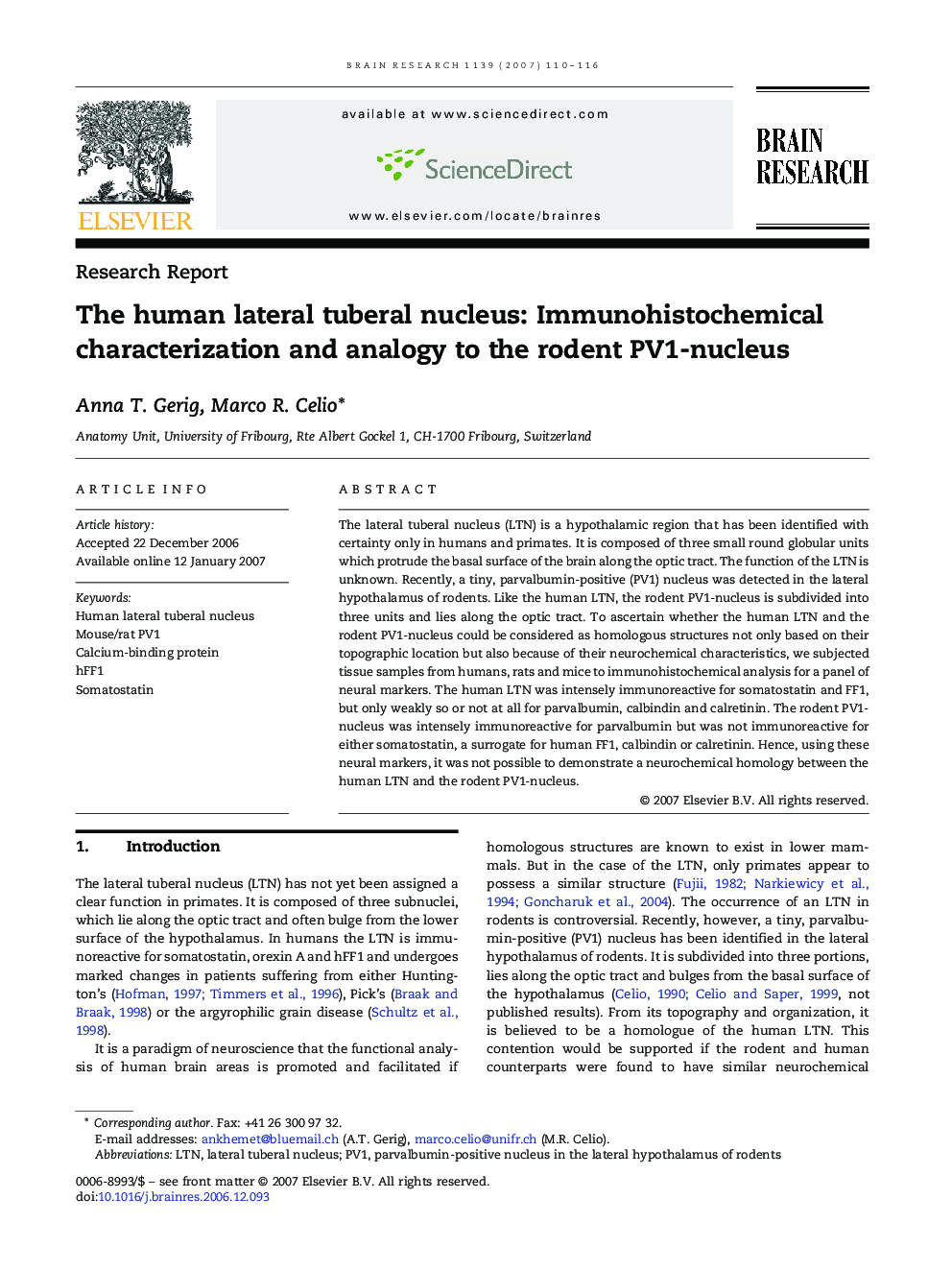| Article ID | Journal | Published Year | Pages | File Type |
|---|---|---|---|---|
| 4331477 | Brain Research | 2007 | 7 Pages |
Abstract
The lateral tuberal nucleus (LTN) is a hypothalamic region that has been identified with certainty only in humans and primates. It is composed of three small round globular units which protrude the basal surface of the brain along the optic tract. The function of the LTN is unknown. Recently, a tiny, parvalbumin-positive (PV1) nucleus was detected in the lateral hypothalamus of rodents. Like the human LTN, the rodent PV1-nucleus is subdivided into three units and lies along the optic tract. To ascertain whether the human LTN and the rodent PV1-nucleus could be considered as homologous structures not only based on their topographic location but also because of their neurochemical characteristics, we subjected tissue samples from humans, rats and mice to immunohistochemical analysis for a panel of neural markers. The human LTN was intensely immunoreactive for somatostatin and FF1, but only weakly so or not at all for parvalbumin, calbindin and calretinin. The rodent PV1-nucleus was intensely immunoreactive for parvalbumin but was not immunoreactive for either somatostatin, a surrogate for human FF1, calbindin or calretinin. Hence, using these neural markers, it was not possible to demonstrate a neurochemical homology between the human LTN and the rodent PV1-nucleus.
Related Topics
Life Sciences
Neuroscience
Neuroscience (General)
Authors
Anna T. Gerig, Marco R. Celio,
